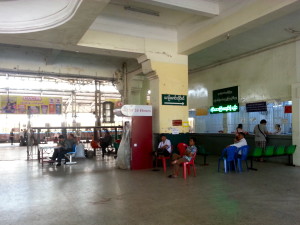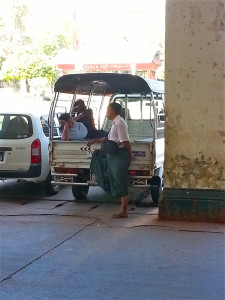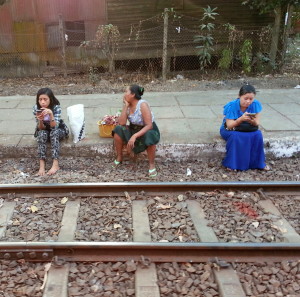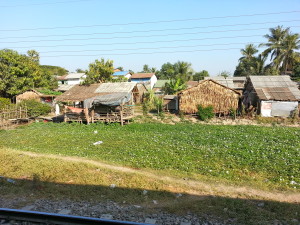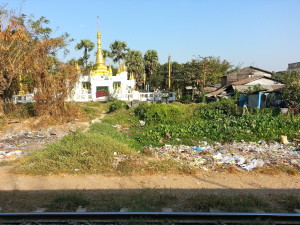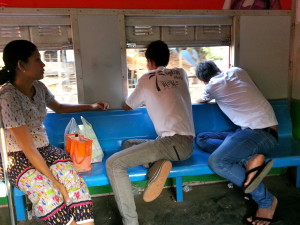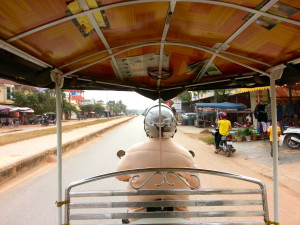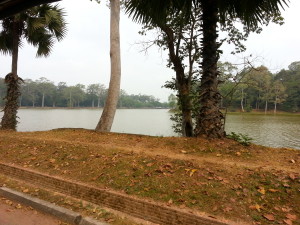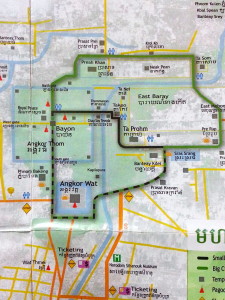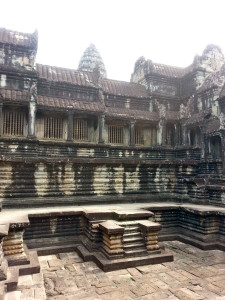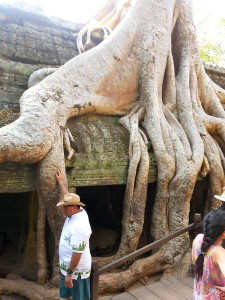***WARNING: GRAPHIC CONTENT***
In 1975 Pol Pot, a Cambodian national who dreamed of a utopian peasant society, brought his politics to a boiling point. He and his communist party, the Khmer Rouge, took control of Cambodia and went after intellectuals, killing doctors, scientists, students and anyone who disagreed with his vision of a communist Cambodia. Cut-off from the media, the outside world had no idea of the extent the Khmer Rouge’s quest for total submission had gone to until it was too late.

The memorial of skulls at the killing fields.
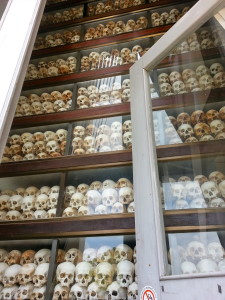
Inside the memorial: floor to ceiling skulls of those who were murdered in the killing fields.

Different coloured stickers on the skulls denote the method of murder.
During Pol Pot’s four-year rule (1975-1979), records show at least 1.5 of 7-8 million Cambodians were killed under his command. Many historians say the body count is much higher as more bones resurface every year after heavy monsoon rains wash away the dirt. Most prisoners had no clue why they were being arrested and when they didn’t follow the rules (shown below) or admit to treason, the torture began. Some were held for days and weeks, until they confessed to things they didn’t do in hopes of reprieve. Once confessions were gained, they were shipped off to the killing fields.
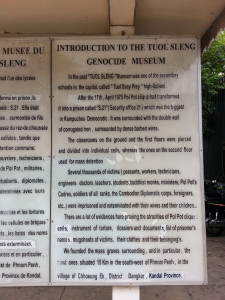
Rules for prisoners at S-21.
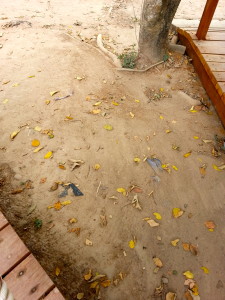
Cloth and bone still protrude from the earth today in the killing fields.
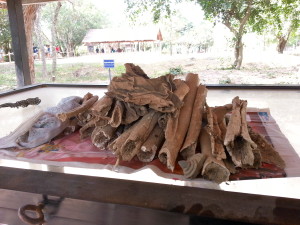
Recently unearthed bones. Victims unknown.
The most infamous detention center from the reign of the Khmer Rouge was called S-21 where locals say only 7 of over 20,000 prisoners lived to tell of the horrors. S-21 was a high school-turned-prison. The security center got its code name from S for Santebal, the Khmer word meaning “state security organization” and 21 for the walky-talky number of former prison chief Nath. Today it remains as a tourist attraction where travellers can see the terrible fate that fell on Cambodia during those 4 years.
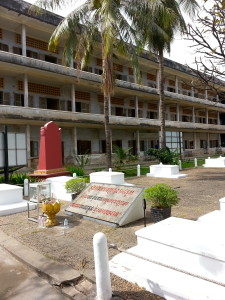
One of four buildings in the compound, this one used for interrogation and torture.
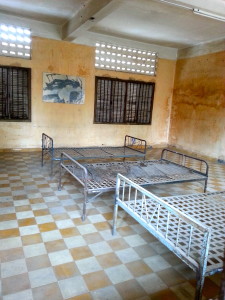
Former classrooms used for torture and interrogation.

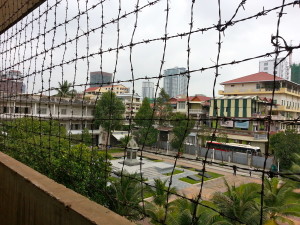
After early prisoners jumped to their deaths, all windows and corridors were laced with barbed wire.
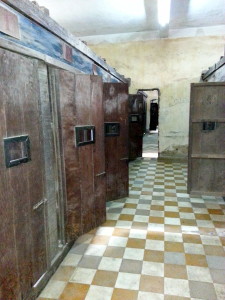
Another of the four buildings; this one used as holding cells.
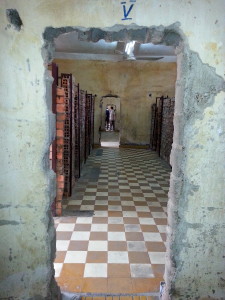
Soldiers broke down walls between former classrooms so they could see straight through and keep an eye on prisoners.
Some may think it’s morbid to want to visit a place like this but I believe that if you want to understand a country and its culture, you need to know where they come from. A people can be most appreciated when you can see their darkness and their light.
All S-21 tours offer a trip to the S-21 detention center and then out to one of the many killing fields where the bodies of Cambodia’s finest minds were murdered and dumped into mass graves.
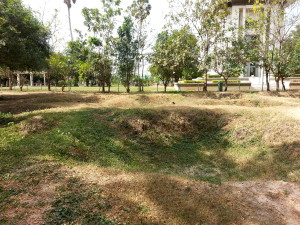
Craters left in the ground from dug-up mass graves.
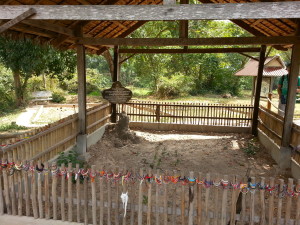
Another mass grave, not fully excavated yet.
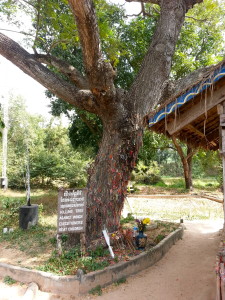
“The Killing Tree.” Soldiers beat children against this tree before throwing them into a pit, on the right.
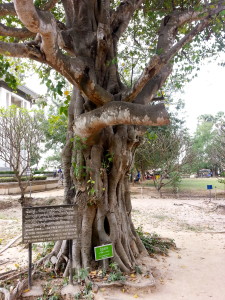
“The Magic Tree,” used as a tool to hang loudspeakers playing music to cover the moans of the executed.
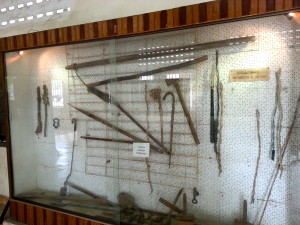
Bullets were too expensive so various tools were used to murder Pol Pot’s victims.
If you have read this far you can see that this is not your average tour. It’s horribly sad and quite frankly, physically sickening. The gravity you feel walking through these buildings and fields is thick with sorrow but gives birth to a new perspective and respect for a nation that is so emotionally scarred. If you’re spending a few days in the capital city of Phnom Penh I highly recommend this somber historical tour.
~Bus fee with hotel pick-up and drop-off = $15USD
~Entrance fee to S-21 = $6USD ($3 entrance + $3 English audio guide)
~Entrance fee to the killing fields = $6USD ($3 entrance + $3 English audio guide)
